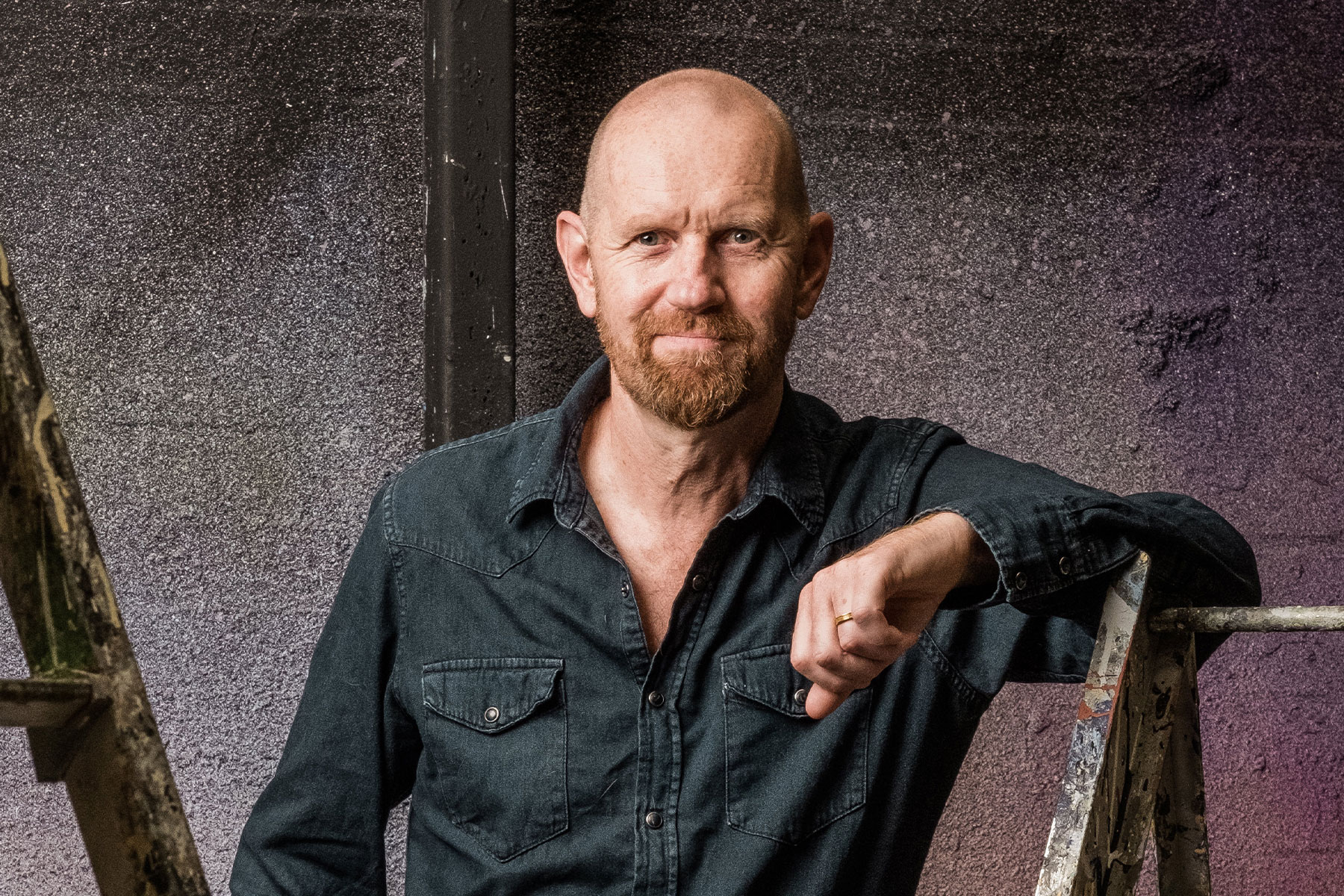An Oak Tree (NT Temporary Theatre)
In An Oak Tree, now ten years old and a syllabus staple, Tim Crouch suggests that this magic is both a cheap trick and a genuine spell. A piano stool can be an oak tree if somebody says so, but say it enough and the stool will actually transform. We'll see it differently: both stool and 'oak tree' at once. (Philosophy geeks: this is performative language in action.)
Crouch plays a hypnotist. He stands on stage and says, "I'm being a hypnotist." His jazzy, wavy-lined waistcoast enhances the effect. Sometimes he acts accordingly, putting on a corny gameshow grin and relishing his own cheap and offensive jokes, but sometimes he drops the pretence and stands there as himself, the author and actor Tim Crouch.
He's joined onstage by an unrehearsed guest performer; someone who has neither read nor seen the play before – the acclaimed Beckettian Conor Lovett on opening night. That person is instructed by Crouch, sometimes openly, sometimes inaudibly and sometimes secretly, through headphones. The process looks a lot like hypnosis: "Say yes," says Crouch. "Yes," Lovett replies.
'Increasingly, Crouch's body of work looks as influential as any in British theatre'
Without acting, then, Lovett becomes the hypnotist's volunteer: a middle-aged man called Andy Smith, whose daughter died after being hit by the hypnotist's car. Anyone, male or female, old or young, can become Andy Smith. Simply saying it makes it so.
Hypnosis works similarly. At the hypnotist's command, his say-so, a fully-clothed Andy Smith suddenly realises he's naked. To all intents and purposes, for all the genuine embarrassment, he might as well be. It's a cruel trick, exploitative and humiliating. We, meanwhile, get to watch Lovett, also fully-clothed, enacting that horror – pretending or playing along. (Remind me why we like watching tragedy again?)
An Oak Tree is full of these optical illusions. Eventually reality and fiction start to entwine or fuse together. Crouch can quiz Andy Smith. Lovett can reply to the hypnotist. M.C. Escher's got nothing on this.
It's not just arid academia, mind; not just theatre about theatre. An Oak Tree is just as concerned with grief and the whole thing's a metaphor for the way that an absence can have a real presence. It's loaded with feeling too: both the volunteer's agony and the hypnotist's bitter regret. At the roadside – we hear cars driving past – a father hugs an oak tree as a stand-in for his daughter. (Onstage, a piano stool stands in for the tree.) It's no coincidence that both hypnosis and theatre are used in therapy: both alter feelings and so change the world.
Increasingly, Crouch's body of work – made in conjunction with his regular collaborators a. smith and Karl James – looks as influential as any in British theatre. He is the heir to Peter Brook and Simon McBurney: British theatre's magic circle.
An Oak Tree runs at the National Theatre until 15 July and at the Traverse Theatre as part of the Edinburgh Fringe (4-16 August)










